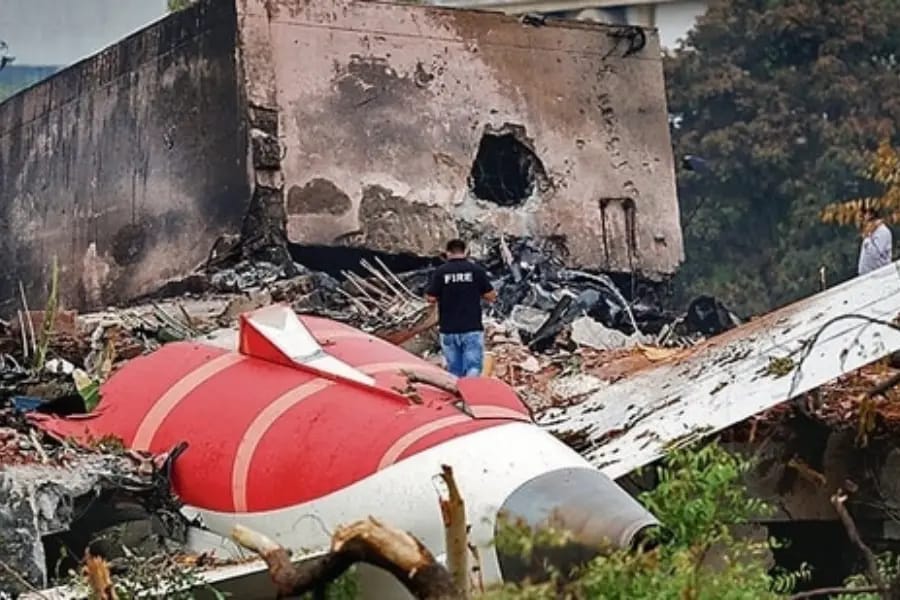
Air India Crash 2025: The calamitous Air India crash of June 12 has raised a lot of concerns about cockpit procedures. It has also raised concerns on possible human error as noted by a preliminary report released on July 11. The tragedy happened just seconds after take-off from Ahmedabad. It killed 241 of the 242 people on-board and an additional 19 on the ground. The incident was a Boeing 787 Dreamliner on a flight to Gatwick Airport in London. It has raised international interest in aviation safety.
32 Seconds to Disaster
The AAIB report lays out a detailed second by second report of the last 32 seconds of the aircraft’s flight. Shortly after the Dreamliner took off from airport, the fuel supply was cut off to both engines. When the cockpit fuel switches were turned off, the aircraft’s power was cut off. It was really during the crucial flying time after take off.
The aircraft crashed right outside the airport perimeter striking a student boarding house. It resulted in a large explosion. Investigators were able to recover the cockpit voice recorder and flight data recorder. But who shut-off the fuel switches, and why, will be an important question.
Cockpit Roles Under Investigation
The flight was operated by First Officer Clive Kunder and Captain Sumeet Sabharwal. Kunder, who had 1,100 hours flying a Boeing 787, was flying pilot. Sabharwal, who had 8,500 hours and was much more experienced in total time, was monitoring pilot.
Typically, pilots will trade off roles, especially on longer flights. However, just after the plane took off, something went terribly wrong. According to the report, the fuel switches were moved to “cut-off” one second apart; this action cut-off the engines fuel source which caused the engines to lose thrust.
Cockpit Communications Raise Questions
The preliminary report of 15 pages presented only one communication in the cockpit. A pilot asked the other, “Why did you disengage?” The other pilot responded, “I did not do that.” The analysis of the cockpit voice.
recorder did not reveal any other communications or any sounds or alerts of significance.
This strange communication has become a prominent part of current investigations. Experts agree that the switches must be deliberately actuated, and not acted on inadvertently in normal circumstances.
Emergency Systems Could Not Help the Flight
As both engines failed, the aircraft deployed its ram air turbine (RAT), a small emergency power supply. Even though emergency procedures were implemented, only one engine would begin the recovery process before the aircraft went down. The delay of the 10 to 14 seconds needed to reset the fuel switch could not be done by an aircraft flying under 500 feet.
Aerospace analyst Bjorn Fehrm said, “It’s just weird.” ‘I would never, ever take 10 seconds to put them on again.” His comments illustrate how there must have been panic and urgency in the cockpit moving into the final moments of the flight.
Mechanical failure or pilot error?
While investigators have not been able to find any mechanical issues with the aircraft or its GE Aerospace engines, they referenced a bulletin from the U.S. FAA in 2018 that some of the Boeing fuel switches were installed without a locking feature, including those on the 787. However, Air India’s aircraft had not been subject to checks for this where not required, and there were no reported issues with its throttle control module, which was replaced in 2023.
What comes next?
Following standard procedures for investigations, officials are currently examining the pilot’s histories, training records, and duty hours. The AAIB report assessed that both pilots had completed an adequate period of rest before the flight, though there were no immediate concerns about anything related to experience or fatigue.
Boeing, GE Aerospace and Air India are assisting with the investigation, but it will be many months before definitive answers become clear. A final report identifying the root cause of the crash has still to be drafted.
Conclusion
This catastrophic accident has generated global concern and action in the aviation community. While recent news updates have suggested that the airplane was fit for flight and both engines were working properly, the mystery around the maneuvers the pilots took in the cockpit and their choice—or mistake—to turn off their fuel is left unanswered.
Until the report becomes available, one of India’s more tragic aviation accidents in its recent history leaves a lasting legacy of the need for adequate cockpit environment, defined procedures, and mechanical safeguards against catastrophic failure.







w4a6no